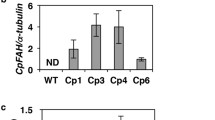Abstract
We show here that a new labyrinthulid strain, L72, isolated from a fallen leaf in the Seto Inland Sea of Japan, produced only docohexaenoic acid (DHA) among all the long-chain polyunsaturated fatty acids (LCPUFAs). The main fatty acid composition was 16:0 (28.9%), 18:0 (7.2%), 18:1 (5.7%), 18:2 (10.4%), and DHA (45.9%) without any other LCPUFA. The lipid content of the strain was 27.4%. The cells had many lipid bodies, which were densely located in all of the cells. On phylogenetic analysis using the 18S rDNA sequence, the strain was located in the labyrinthulids group, forming a monophyletic group with Labyrinthula sp. (strain s) and Labyrinthuila sp. (strain L59). We further tested the culture optimization of strain L72 to evaluate the ability of the strain to produce DHA. The optimum salt concentration and the temperature of the strain were 100% of artificial seawater and 20°C. Strain L72 could grow well on soybean oil (SBO) or soybean lecithin (SBL) as the carbon source. When 20 g/l of SBL was added to the medium, DHA production reached the maximum amount at 0.67 g/l for 14 d. The two important facts, that the strain can use SBL as the main nutrient and contains only DHA among the LCPUFAs, will be of great advantage for industry.





Similar content being viewed by others
References
HO Bang J Dyerberg (1972) ArticleTitlePlasma and lipoproteins in Greenlandic West Coast Eskimos Acta Med Scand 192 85–94
M Hasegawa H Kishino T Yano (1985) ArticleTitleDating of the human-ape splitting by a molecular clock of mitochondrial J Mol Evol 22 160–174
D Honda T Yokochi T Nakahara S Raghukumar A Nakagiri K Schaumann T Higashihara (1999) ArticleTitleMolecular phylogeny of labyrinthulids and thraustochytrids based on the sequencing of 18 S ribosomal RNA gene J Eukaryot Microbiol 46 637–647
J Huang T Aki K Hachida T Yokochi S Kawamoto S Shigeta K Ono O Suzuki (2001) ArticleTitleProfile of polyunsaturated fatty acids produced by Thraustochytrium sp. KK17-3 J Am Oil Chem Soc 78 605–610
Y Kumon T Yokochi T Nakahara M Yamaoka K Mito (2002) ArticleTitleProduction of long chain polyunsaturated fatty acids by monoxenic growth of labyrinthulids on oil-dispersed agar medium Appl Microbiol Biotechnol 60 275–280
Y Kumon R Yokoyama T Yokochi D Honda T Nakahara (2003) ArticleTitleA new labyrinthulid isolate, which solely produces n-6 docosapentaenoic acid Appl Microbiol Biotechnol 63 22–28 Occurrence Handle10.1007/s00253-003-1333-4
Kumon Y, Yokochi T, Nakahara T (2005) High yield of long-chain polyunsaturated fatty acids by labyrinthulids on soybean lecithin-dispersed agar medium. Appl Microbiol Biotechnol (in press). DOI: 10.1007/s00253-005-1978-2
C Leander D Porter (2001) ArticleTitleThe Labyrinthulomycota is comprised of three distinct lineages Mycologica 93 459–464
T Nakayama S Watanabe K Mitsui H Uchida I Inouye (1996) ArticleTitleThe phylogenetic relationship between the Chlamydomonadales and Chlorococcales inferred from 18 S rDNA sequence data Phycol Res 44 47–55
D Porter (1989) Phylum Labyrinthulomycota L Margulis JO Corliss M Melkonian DJ Chapman (Eds) Handbook of Protoctista Jones and Bartlett Boston 388–398
C Ratledge (2004) ArticleTitleFatty acid biosynthesis in microorganisms being used for Single cell oil production Biochimie 86 807–815 Occurrence Handle10.1016/j.biochi.2004.09.017
N Saitou M Nei (1987) ArticleTitleThe neighbor-joining method: a new method for reconstructing phylogenetic trees Mol Biol Evol 4 406–425
T Sakata K Iwamoto (1995) ArticleTitleIsolation of marine algicidal microorganisms on diatom double layer agar plates Fish Sci 61 173–174
T Sakata T Fujisawa T Yoshikawa (2000) ArticleTitleColony formation and fatty acid composition of marine labyrinthulid isolates grown on agar media Fish Sci 66 84–90 Occurrence Handle10.1046/j.1444-2906.2000.00012.x
JP Giovanni ParticleSan EY Chew (2005) ArticleTitleThe role of omega-3 long-chain polyunsaturated fatty acids in health and disease of the retina Prog Retin Eye Res 24 87–138
L Sijtsma ME Swaaf (2004) ArticleTitleBiological production and applications of the omega-3 polyunsaturated fatty acid docosahexaenoic acid Appl Microbiol Biotechnol 64 146–153 Occurrence Handle10.1007/s00253-003-1525-y
ME Swaaf JT Pronk L Sijtsma (2003) ArticleTitleFed-batch cultivation of the docosahexaenoic-acid-producing marine alga Crypthecodinium cohnii on ethanol Appl Microbiol Biotechnol 61 40–43
Swofford DL (2002) PAUP*. Phylogenetic Analysis Using Parsimony (*and Other Methods). Version 4.0 beta 10. Sinauer Associates, Sunderland, M.A.
JD Thompson DG Higgins TJ Gibson (1994) ArticleTitleCLUSTAL W: improving the sensitivity of progressive multiple sequence alignment through sequence weighting, position-specific gap penalties and weight matrix choice Nucleic Acids Res 22 4673–4680
AM Urquiza S Liu M Sjoberg RH Zetterstrom W Giffiths J Sjovall T Perlmann (2000) ArticleTitleDocosahexaenoic acid, a ligand for the retinoid receptor in mouse brain Science 290 2140–2144 Occurrence Handle10.1126/science.290.5499.2140
SW Watson EJ Ordal (1957) ArticleTitleTechniques for the isolation of Labyrinthula and Thraustochytrium in pure culture J Bacteriol 73 589–590
T Yokochi T Nakahara T Higashihara M Yamaoka R Kurane (2001) ArticleTitleA new isolation method for Labyrinthulids using a bacterium, Psychrobacter phenylpyruvicus Mar Biotechnol 3 68–73 Occurrence Handle10.1007/s101260000054
Author information
Authors and Affiliations
Corresponding author
Rights and permissions
About this article
Cite this article
Kumon, Y., Yokoyama, R., Haque, Z. et al. A New Labyrinthulid Isolate That Produces Only Docosahexaenoic Acid. Mar Biotechnol 8, 170–177 (2006). https://doi.org/10.1007/s10126-005-5098-x
Received:
Accepted:
Published:
Issue Date:
DOI: https://doi.org/10.1007/s10126-005-5098-x




